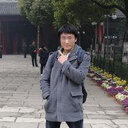Aurantiamide acetate suppresses the growth of malignant gliomas in vitro and in vivo by inhibiting autophagic flux.
Schlüsselwörter
Abstrakt
We aim to investigate the effect of aurantiamide acetate isolated from the aerial parts of Clematis terniflora DC against gliomas. Human malignant glioma U87 and U251 cells were incubated with different concentrations (0-100 μM) of aurantiamide acetate. Aurantiamide acetate greatly decreased the cell viability in a dose- and time-dependent manner. It induced moderate mitochondrial fragmentation and the loss of mitochondrial membrane potential. No significant difference was found in the alternation of other intracellular organelles, although F-actin structure was slightly disturbed. Apparent ultrastructure alternation with increased autophagosome and autolysosome accumulation was observed in aurantiamide acetate-treated cells. The expression of LC3-II was greatly up-regulated in cells exposed to aurantiamide acetate (P < 0.05 compared with control). The cytoplasmic accumulation of autophagosomes and autolysosomes induced by aurantiamide acetate treatment was confirmed by fluorescent reporter protein labelling. Administration of chloroquine (CQ), which inhibits the fusion step of autophagosomes, further increased the accumulation of autophagosomes in the cytoplasm of U87 cells. Autophagy inhibition by 3-methyladenine, Bafilomycin A1 or CQ had no influence on aurantiamide acetate-induced cytotoxicity, whereas autophagy stimulator rapamycin significantly suppressed aurantiamide acetate-induced cell death. The anti-tumour effects of aurantiamide acetate were further evaluated in tumour-bearing nude mice. Intratumoural injection of aurantiamide acetate obviously suppressed tumour growth, and increased number of autophagic vacuoles was observed in tumour tissues of animals receiving aurantiamide acetate. Our findings suggest that aurantiamide acetate may suppress the growth of malignant gliomas by blocking autophagic flux.


